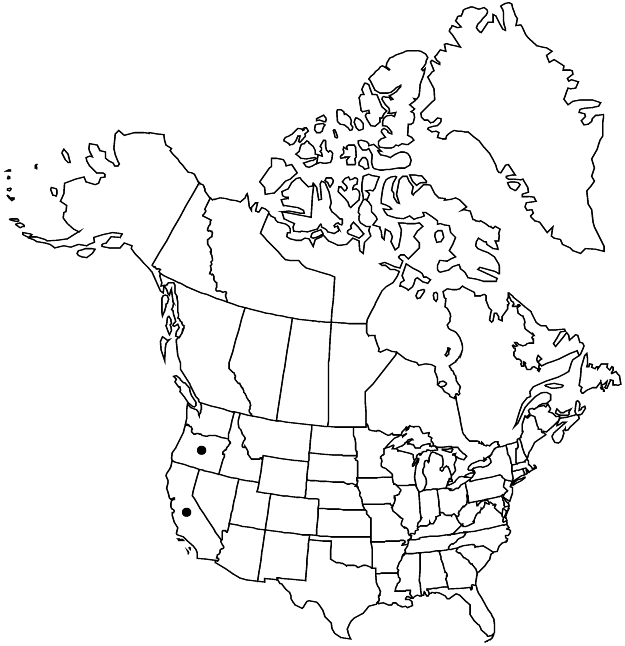Polygonum californicum
in A. P. de Candolle and A. L. P. P. de Candolle, Prodr. 14: 100. 1856.
Herbs. Stems erect, green, simple or divaricately branched, ± wiry, 4–40 cm, papillose-scabridulous. Leaves uniformly distributed, not articulated to ocreae, basal leaves usually caducous, distal leaves abruptly reduced to bracts; ocrea 5–10 mm, glabrous or papillose-scabridulous, proximal part cylindric, distal part white or tawny, disintegrating into ± bristly-fringed fibers; petiole absent; blade 3-veined, without pleats, linear, 5–25(–30) × 0.5–2 mm, margins revolute, papillose-denticulate or smooth, apex mucronate or weakly spine-tipped. Inflorescences axillary; cymes in distal axils, 1-flowered. Pedicels absent. Flowers open or closed; perianth 2.5–3.5 mm; tube 10–20% of perianth length; tepals overlapping, uniformly white to pink, petaloid, elliptic, navicular, apex acute to acuminate; midveins unbranched; stamens 8. Achenes enclosed in or slightly exserted from perianth, brown, narrowly elliptic, 1.8–2.2 mm, faces subequal, shiny, smooth.
Phenology: Flowering May–Sep.
Habitat: Open places, including serpentine
Elevation: 40-1200 m
Discussion
Selected References
None.
